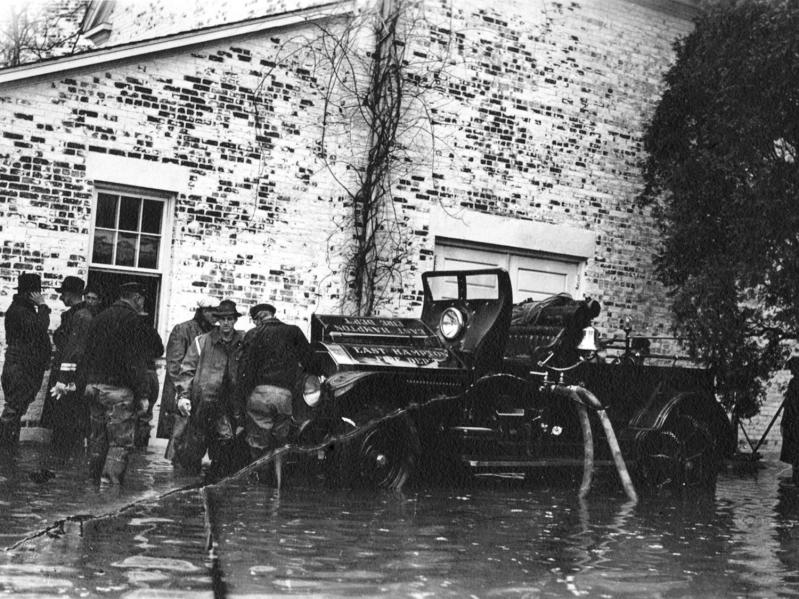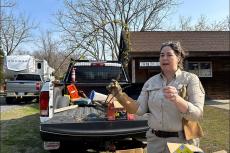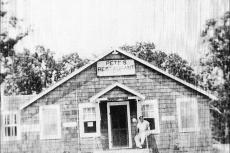On Feb. 14, 1948, a sudden rise in temperature and a torrential downpour resulted in the flooding of East Hampton Village roads. The water poured into cellars, flooded farmland, and nearly submerged the seats of Guild Hall’s John Drew Theater.
The flood was unexpected but did not cause severe damage. The mixture of melted snow and rain mainly flooded basements, doing the most damage to the house and shop of Charles Squires (1907-1952). Residents traveled the roads by boat, and about 11 feet of water accumulated below the railroad bridge on the Sag Harbor Road (Route 114). East Hampton had experienced a similar flood 12 years earlier, on Feb. 17, 1936.
The 1936 flood was extensive, causing major damage to the newly built Guild Hall. In response, the arts center had an embankment erected on the north side of the building to divert any future floodwater into the street. Despite this, water from the 1948 flood managed to break through the embankment, filling the orchestra pit, the basement under Guild Hall’s stage, and the theater.
Faced with this deluge, Helen S. Gay (1891-1974), chairwoman of the Guild Hall house and grounds committee, called the East Hampton Fire Department for help. Firefighters, headed by Chief William Conrad (1879-1967), arrived at the scene, and are pictured here assessing the damage. They successfully pumped most of the water out of the building by the end of the day. At some point volunteers drove a fire truck onto the stage to remove water from the orchestra pit.
In true theatrical resilience, Guild Hall had to cancel only one evening’s event, a Valentine’s Day masquerade party for East Hampton’s junior high school students. Luckily, no performers traveling from out of town had their performances canceled because of the flooding, and programming resumed as scheduled on Monday, Feb. 16.
—
Megan Bardis is a librarian and archivist in the East Hampton Library’s Long Island Collection.




